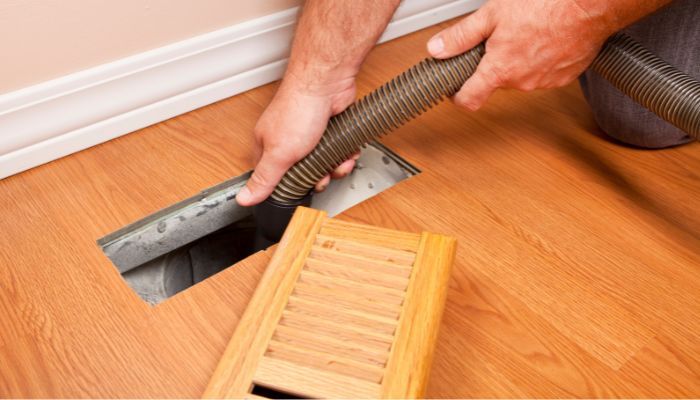Spotless Panes: Elevating Your Home’s Appeal with Window Cleaning

Windows are often a focus point of a home’s aesthetic beauty, and clean windows play a large role in the overall attractiveness of a property. This article will discuss the impact of clean windows on home aesthetics, provide an overview of various window cleaning techniques, from basic to advanced, dispel common misconceptions about window cleaning, and provide an overview of essential window cleaning tools for a streak-free shine.
The Impact of Clean Windows on Home Aesthetics
The Impact of Clean Windows on Home Aesthetics
Windows are often overlooked as an important component of the aesthetic of a home, yet they can have a huge impact on the feel and look of a living space. Clean windows will allow adequate amounts of natural light to enter, brightening up the home or office. Similarly, an uninterrupted view of the outdoors will provide a sense of spaciousness, whether gazing upon a city skyline or a rural landscape. In addition, a home with clean windows will generally look more polished and presentable, boosting property values as well.
On the other hand, dirty windows will reduce people’s ability to see out of them, whilst making the view of the exterior far less crystal in clarity. Furthermore, this could create a sense of constriction and lack of space within the house. In contrast to a house with clean windows, one with windows that are smeared or stained can give an impression of disregard and neglect of the space – which could lead to lower property values overall.
The overall aesthetic of a home can be heavily reliant on the cleanliness of the windows. As a result, when decorating a home, it is important to prioritize exterior maintenance and upkeep, like the cleaning of windows. Consequently, clean windows can ultimately improve the look, feel, and potential economic value of a living space.
Window Cleaning Techniques: From Basic to Advanced
Window cleaning techniques vary depending on the type of window, the size of the window, and the dirt or grime that is present. However, for all windows there are a few basic techniques that apply. The most common method of window cleaning is using a microfiber cloth and a cleaning solution. This helps to lift dirt from the window using chemical reaction and also to buff out streaks from the window. On the other hand, for windows that are extremely dirty, a more abrasive tool such as an abrasive scrubbing pad may be preferable. Additionally, for windows that have stubborn dirt and stains, an option such as a steam cleaner may be used to power away the dirt.
Moreover, when cleaning windows, the choice of cleaning solution should be relevant to the type of window and the dirt present. Basic window cleaning solutions are often the most effective way to remove dirt and are varied in their specific composition. For windows that are highly in need of a deep clean, a window cleaning solution with a stronger pH reaction may be necessary.
To the standard window cleaning techniques, there are several more advanced methods of window cleaning. For instance, aerosol window cleaning solutions may be used to access higher windows, or for windows with tight crevices that a cloth cannot reach. Similarly, streak-resistant window cleaning solutions may be preferred in certain trends, as they allow for a more durable level of shine.
Furthermore, for windows in need of further protection, window sealants and stains may be applied. Sealants come in a range of colors and opacity shifts, which can help waterproof windows and protect against further terrain detachment. Similarly, window stains can be used to completely change the texture of the window, to allow for further protection and to give a unique visual treatment. As a result, it is essential to consider the type of window before selecting a window cleaning technique, in order to ensure that the right products and techniques are used for the job.
There are a range of window cleaning techniques that can apply. From the most basic cleaners and solutions to sealants and stains, the process of window cleaning varies depending on the type of window in need of a deep clean. It is important to consider the window type before proceeding with any type of window cleaning in order to ensure that the job is done efficiently and effectively.
Common Misconceptions about Window Cleaning
One common misconception about window cleaning is that it is an easy task that anyone can do. However, the truth is that window cleaning is a skilled job that requires special tools and cleaning supplies, as well as careful technique and experience to ensure that windows and glass surfaces are effectively cleaned without leaving streaks or marks. In addition, many types of window surfaces require special cleaning solutions in order to effectively remove dirt, dust, and grime, and most of these solutions can only be used by experienced window cleaning professionals with the right tools and training.
Another misconception is that all windows should be cleaned the same way. On the other hand, window cleaning involves different methods depending on the surface of the glass. For instance, large windows should be cleaned using a ladder and squeegee, while small windows can be cleaned using homemade vinegar solutions. Similarly, tinted or special glass surfaces require a specific kind of cleaning solution to avoid damaging the glass, so it’s important to hire a professional who is familiar with the type of window surface.
Furthermore, many people mistakenly believe that there is no need to clean windows until they appear dirty. In contrast, windows should be professionally cleaned on a regular basis as dirt and dust particles can accumulate and build up over time. As a result, regular window cleaning can help maintain clean windows for a longer period of time, as well as improving the appearance and energy efficiency of the home. Consequently, it’s important to hire a professional window cleaning service to ensure that your windows are properly cleaned and maintained.
Essential Window Cleaning Tools for a Streak-free Shine
Essential window cleaning tools are essential for achieving a streak-free shine on windows. The three main tools are a squeegee, cotton cloths, and a liquid cleaning solution. A squeegee is a long-handled tool with a rubber edge used to collect water, soap, and dirt particles during the window cleaning process. Cotton cloths are used to dry windows after they have been wiped down with the squeegee and cleaning solution. In addition, a liquid cleaning solution, such as a glass-friendly soap and water mixture, helps to break down dirt and grime and provide a sparkling clean finish.
On the other hand, window cleaning also requires an assortment of handy tools to help the process go more smoothly. These include a scrubbing brush, a ladder, a bucket, and plenty of protective gear, including protective eyewear, gloves, and safety mats and steps. A scrubbing brush is ideal for removing stubborn dirt and grime from window frames. A ladder provides better access to upper windows and hard-to-reach areas. Moreover, a bucket allows the user to easily store and transport cleaning solutions and tools. Furthermore, safety gear is essential to protect against slips and falls when cleaning high windows.
Window cleaning requires a lot of time and patience. For instance, make sure to begin by cleaning the frames first and work closer to the edge of the window as the cleaning process goes on. Similarly, clean each window one at a time and wipe off any remaining water or dirt residue from the frame if necessary. Be sure to use the correct motions when using a squeegee; that is, use one continuous and repetitive stroke in the same direction. As a result, this will help to ensure a streak-free shine every time.
Overall, window cleaning tools are essential for achieving a streak-free shine. The right combination of tools and techniques can help to create that polished, spotless look. Consequently, proper window cleaning is a great way to brighten and enhance the look of any home.
Final Takeaways
It is clear that clean windows significantly contribute to the aesthetic appeal of a home. There are a range of window cleaning techniques available, from basic to advanced, to ensure a sparkly clean appearance. Common misconceptions about window cleaning include the infallibility of using chemical-based products and the occupancy of huge amounts of time. However, utilizing essential window cleaning tools, such as window squeegees, scrapers, and microfiber towels, is essential for achieving a streak-free shine. Therefore, it is vital to use the right tools and techniques to keep the windows in your home sparkling clean and aesthetically pleasing.
FAQ
How frequently should I have my windows professionally cleaned?
The frequency with which you should have your windows professionally cleaned depends on various factors including the location of your home, environmental conditions, and personal preference. Typically, for homes in average conditions:
Interior Windows: 1-2 times a year.
Exterior Windows: 2-4 times a year.
If your home is near a busy street, construction site, or in an area with high pollen counts, you might need more frequent cleanings.
Can I use household products to clean my windows?
Yes, many household products can effectively clean windows. A popular solution is a mixture of equal parts white vinegar and water. Dish soap can also be added to warm water for a streak-free shine. However, it’s crucial to ensure that the products used don’t leave residues or damage the window’s material. If unsure, it’s always best to test a small area first or consult with a professional.
Why do my windows have a cloudy appearance even after cleaning?
A cloudy appearance can result from various reasons:
Residues: Leftover soap, hard water spots, or cleaning products can leave a haze on windows.
Scratches: Fine scratches on the glass surface can scatter light, giving a cloudy appearance.
Damaged Seals: For double-paned windows, a broken seal can allow moisture to get between the panes, resulting in condensation and a foggy appearance.
Mineral Deposits: Over time, minerals from hard water or other sources can etch the glass, leading to cloudiness.
If regular cleaning doesn’t resolve the cloudiness, it may be time to consult with a window professional.
What’s the best time of year to clean my windows?
The best time to clean windows can vary depending on your region and climate. Generally, it’s ideal to clean windows during periods of mild weather, such as spring or fall. Cleaning during these times ensures that the cleaning solutions do not dry too quickly (which can happen in extreme heat) or freeze (in cold temperatures). Additionally, cleaning windows in spring helps to remove the grime from winter, while a fall cleaning prepares windows for the winter months ahead. However, windows can be cleaned at any time of the year with proper precautions and considerations for the weather conditions.






